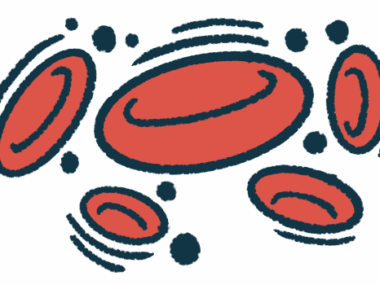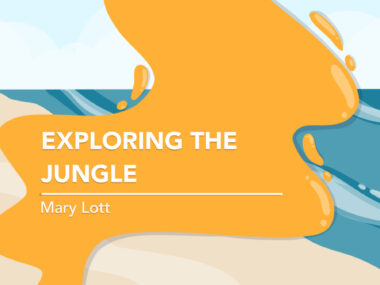How living with cold agglutinin disease has changed my life
Whatever the cause, my diagnosis affects how I shop, travel, and exist
Written by |

Usually, I can pinpoint a cause for the challenges I face. I know exactly when, why, and how I broke my nose and ended up looking like a raccoon for more than two weeks. I wish I’d asked a responsible person to monitor the pool when I attempted a back flip off a friend’s shoulder, just as the friend rose out of the water. I still have a scar from that almost 50 years later.
I made choices that led to my broken nose. But I don’t know when, why, or how I developed cold agglutinin disease (CAD).
Not a choice
CAD is a rare blood disease characterized by having fewer red blood cells (RBCs) than a healthy adult has. The reasons why one person develops CAD and another one doesn’t have yet to be uncovered.
Conditions that trigger CAD are known. When RBCs are exposed to lower temperatures, they clump together, or agglutinate, and are destroyed — a process known as hemolysis. Infections can also cause hemolysis and trigger the complement cascade, a function of the immune system. The result of both processes is the same: fewer RBCs to carry oxygen throughout the body.
CAD requires some lifestyle changes. The anemia CAD causes makes me extremely tired. As I write this column, it’s Aug. 15, and I’ve just begun three days of air travel. I’m sitting in an extremely uncomfortable wheelchair, having been pushed from check-in to the gate. At every stop, I use this service.
I constantly check the weather, specifically seasonal changes. I must stay warm, and that includes not even breathing cold air. When it enters my lungs and lowers the temperature of the red blood cells populating my alveoli, it triggers hemolysis. To compensate, I stay indoors a lot, avoiding cold grocery stores and even church services. Winter makes me a hermit.
CAD causes our immune systems to operate at less than optimal levels. Infections take longer to clear. That means a cold lasts longer, and cuts need more time to heal. Once I dropped a wooden board on my toe. Six months later, my tender digit was still healing.
Friends and family are affected
John Donne, an English philosopher, poet, and pastor, once said, “No man is an island, / Entire of itself; / Every man is … / part of the main.” That’s especially true for those of us with chronic diseases. My CAD requires adjustments that affect our entire family.
My husband must do more of the household chores, especially shopping. I just don’t have the stamina to walk through grocery stores. When I go shopping, I go to one place, get what I want immediately, and leave.
But my children and their families are affected as well. One lives on the vast wasteland of an American prairie. Another lives in the frozen north near Canada. This means that I cannot visit them except between June and August, when the weather is warm. They must do much of the traveling.
I found myself at an orthopedic clinic this summer. At one point in July, the pain in my knee was so great that I couldn’t walk. I didn’t know how it had developed. I received a diagnosis and a treatment plan, and now I’m mending. It all takes a while because CAD invariably slows healing.
It’s all no fun, and I’m tired of dealing with it.
Even though the cause of cold agglutinin disease has yet to be pinpointed, 300 to 3,000 of us in the U.S. have it, according to the Cleveland Clinic. I’ve heard the plaintive cry, “I can’t take it anymore. I feel like giving up.”
When I think those thoughts, I’m reminded of the late Donald Mallard, a character from the CBS crime drama “NCIS.” He quoted Winston Churchill when he said, “If you’re going through hell, keep going.”
I will keep going. There is no otherwise.
Note: Cold Agglutinin Disease News is strictly a news and information website about the disease. It does not provide medical advice, diagnosis, or treatment. This content is not intended to be a substitute for professional medical advice, diagnosis, or treatment. Always seek the advice of your physician or other qualified health provider with any questions you may have regarding a medical condition. Never disregard professional medical advice or delay in seeking it because of something you have read on this website. The opinions expressed in this column are not those of Cold Agglutinin Disease News or its parent company, Bionews, and are intended to spark discussion about issues pertaining to cold agglutinin disease.







Leave a comment
Fill in the required fields to post. Your email address will not be published.